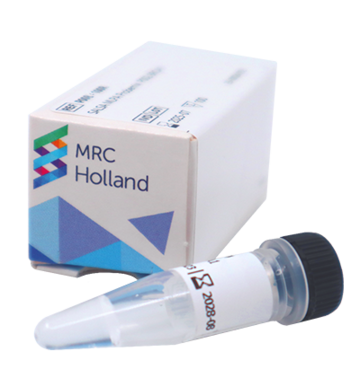Rett syndrome (RTT) is a neurodevelopmental disorder that occurs almost exclusively in females, with a worldwide incidence ranging between 1:10,000 and 1:23,000 female births (GeneReviews) (Armstrong et al. 2011, Ellaway et al. 1999). Classic RTT is characterized by a period of normal development during the first 6–18 months of life, followed by loss of already gained skills, such as speech and purposeful hand movement. Additional main features are acquired microcephaly, stereotypic hand movements, impaired locomotion and communication dysfunction (Hagberg et al. 1983). The rapid deterioration phase tends to plateau at around the fourth year of life, when improvements in behaviour, hand use, and communication are noticed. Thereafter, a period of apparent stability lasts for decades despite a slow decline in motor functions being apparent. Patients, lacking one or more of the disorder's major features, are identified as atypical RTT cases, which are subdivided into three distinct clinical subgroups: congenital variant, early seizure variant and preserved speech variant (Neul et al. 2010). Previously, some variants, such as the late childhood regression variant, Rettoid male and familial atypical variant, were classified as "forme fruste", but are now considered to be part of the Rett syndrome spectrum (Pini et al. 2016). The early-onset seizure and congenital variants of RTT are nowadays considered distinct clinical entities: CDKL5 deficiency disorder and FOXG1 syndrome, respectively. The prevalence of atypical RTT is estimated at 1:45,000, predominantly in female individuals.
Advancements in the understanding of the genetics and complex biology behind RTT have facilitated the identification of many causative genes for RTT with overlapping phenotypes, causing a shift in the perspective of RTT towards a spectrum of overlapping phenotypes with great genetic heterogeneity (Vidal et al. 2019, Xiol et al. 2021).
MECP2 duplication syndrome (also called proximal Xq28 duplication syndrome or syndromic X-linked intellectual disability Lubs type) is a condition that occurs almost exclusively in males (100% penetrant in males). MECP2 duplication syndrome and Rett syndrome share overlapping clinical phenotypes including intellectual disability, speech and motor delay, seizures, hypotonia, and progressive spasticity. Occasionally, females have been described with a MECP2 duplication and a range of manifestations from mild intellectual disability to a phenotype similar to that seen in males. The exact prevalence of MECP2 duplication syndrome is unknown, but data from several large array-based studies suggest a prevalence of approximately 1% in males with moderate-to-severe intellectual disability (GeneReviews). A recent Australian study calculated that the birth prevalence of MECP2 duplication syndrome in Australia was 0.65:100,000 for all live births and 1:100,000 for males (Giudice-Nairn et al. 2019).
CDKL5 deficiency disorder (CDD) is a condition characterized by a broad range of clinical symptoms and severity. The primary symptoms include early-onset epilepsy (starting within the first three months of life), generalized hypotonia, psychomotor development disorders, intellectual disability, and cortical vision disorders. In addition to these primary symptoms, a number of accompanying symptoms have been reported, e.g. autistic features, poor eye contact, repetitive hand movements, vegetative disorders, gastrointestinal problems and distinctive facial features (GeneReviews). The prevalence of CDD is estimated at ~1:40,000-60,000 live births, with females affected four times more than men (Jakimiec et al. 2020). However, the course of disease is usually more severe in male patients.
CDD is also known as early infantile epileptic encephalopathy 2 (EIEE2) and was previously classified as an atypical form of Rett syndrome, i.e. the early-onset seizure variant of Rett syndrome. Rett syndrome and CDD have several common features, including seizures and intellectual disability, although only 23.7% of CDD patients meet clinical criteria for Rett syndrome (Olson et al. 2019). Other signs and symptoms of CDD are distinct from those of Rett syndrome, and CDD is now considered a separate clinical entity (Fehr et al. 2013).
| Condition |
Genes |
Probemix and coverage |
Remarks |
| Classic Rett syndrome |
MECP2
(4 exons)
|
P015-F2: Each exon
|
- |
| MECP2 duplication syndrome |
MECP2
(4 exons)
|
P015-F2: Each exon
|
- |
| Atypical Rett syndrome |
MECP2
(4 exons)
|
P015-F2: Each exon
|
- |
|
NTNG1
(6 exons)
|
P189-C2: Each exon
P015-F2: Exons 2, 3, 5, 6
|
Exon 3, 5 and 6 probes in P015 have the same ligation site as probes in P189. |
| CDKL5 deficiency disorder |
CDKL5
(21 exons)
|
P189-C2: Each exon
P015-F2: Exons 3, 6, 9, 10
|
Probes in P015 have the same ligation sites as probes in P189. |
| Early infantile epileptic encephalopathy 1 |
ARX
(5 exons)
|
P189-C2: Each exon
P015-F2: Exons 1, 5
|
Probes in P015 have the same ligation sites as probes in P189. |
| FOXG1 syndrome |
FOXG1
(1 exon)
|
P189-C2: Exon 1 and upstream region
|
- |





